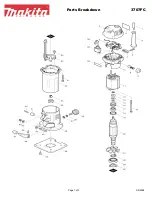
20
FUELING
DANGER
Explosion/Fire/Burn Hazard. Gasoline is extremely
flammable. Vapors are explosive. Keep at least 50
feet (15 m) away from heat, sparks, open flame, smok-
ing materials, static electricity, and all other sources of
ignition when fueling unit.
Gasoline vapor is heavier than air, and can travel along
the ground to nearby sources of ignition such as electri-
cal motors, pilot lights, and hot or running engines.
Vapors ignited by an ignition source can flash back to
the fuel container, resulting in an explosion, fire, serious
or fatal injuries, and extensive property damage.
Follow these important safety precautions to minimize
risk of explosion or fire:
•
ALWAYS use an approved, "no-spill" type fuel
container with tight-fitting caps.
•
ALWAYS follow posted safety instructions for filling
fuel containers at filling stations.
•
ALWAYS place container to be filled with gasoline
on the ground to prevent static build-up during
filling.
•
ALWAYS keep the metal filling pump nozzle in
contact with the fuel container while dispensing fuel
to prevent buildup and discharge of static electric-
ity.
•
NEVER fill fuel container on SUV/truck bed or in
trunk of car.
•
NEVER smoke near fuel.
•
NEVER allow flames or sparks near fuel.
•
ALWAYS loosen fuel caps slowly to allow pressure
in tanks and containers to escape
•
ALWAYS use extreme care when mixing, storing,
or handling fuel.
•
NEVER remove tank cap or refuel a unit while the
engine is hot or running
FUELING
Fill Fuel Outdoors
Open Fuel Cap Slowly
















































